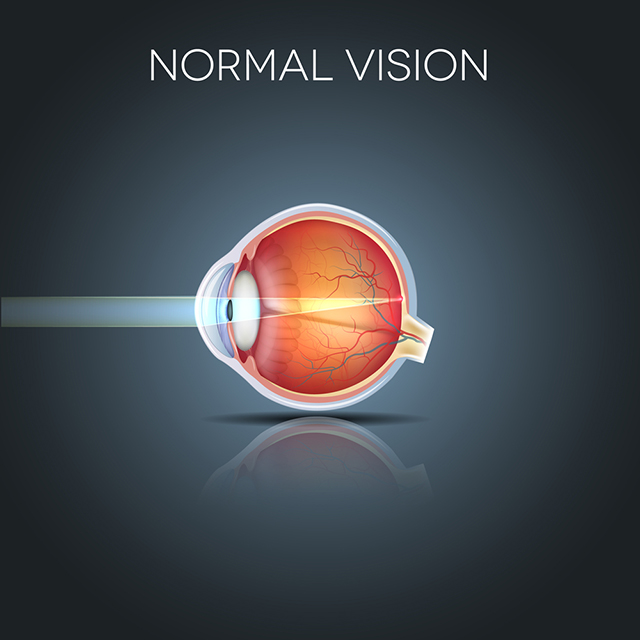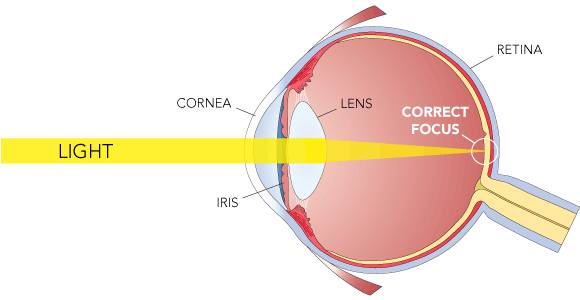Patient Education
Refractive Errors

Emmetropia
Emmetropia is the ideal state of the eye in which no refractive error is present. The focus of the eye is set for distance vision without the need for glasses or contact lenses. Emmetropia occurs when the curvature of the cornea, the shape of the lens and their distances from each other and the retina are in harmony. The cornea and lens focus the rays of light from an object perfectly on the retina, creating a sharp image.

When the eyes are not in their ideal state and glasses are required to correct your vision, a refractive error is said to be present. Common refractive errors include hyperopia, myopia, astigmatism, and presbyopia, and their descriptions can be found by clicking on the links below.
- Hyperopia
- Myopia
- Astigmatism
- Presbyopia
Hyperopia, or far-sightedness, is the opposite of myopia. Here, your eye is too short or your cornea is less curved. Consequently, light rays entering your eye fall behind the retina. This results in blurred vision which is worse at near distances than far.
You may be familiar with the term myopia, also known as near-sightedness. Myopia is the result of an eyeball which is too long, or a cornea which is too curved. In both cases, light rays entering your eye fall short of the retina, and objects in the distance appear blurred. If you have this condition, you are not alone; more than 70 million people in North America have myopia.
Astigmatism occurs when your cornea is shaped like a football with two different curvatures. Images appear blurred or ghost-like because light rays are refracted unequally. In extreme cases, images both near and far, appear blurred. Many people who have myopia also have astigmatism.
Presbyopia is difficulty in reading or seeing at near distances and is a normal part of the aging process - it is the result of your natural lens growing, similar to the way an onion grows. This growth, in time, begins to crowd the space between the lens and the ciliary muscle inside your eye. The result is a reduction in the effective function of the ciliary muscle thus leading to a continuous decrease of accommodation, the ability to focus at near.